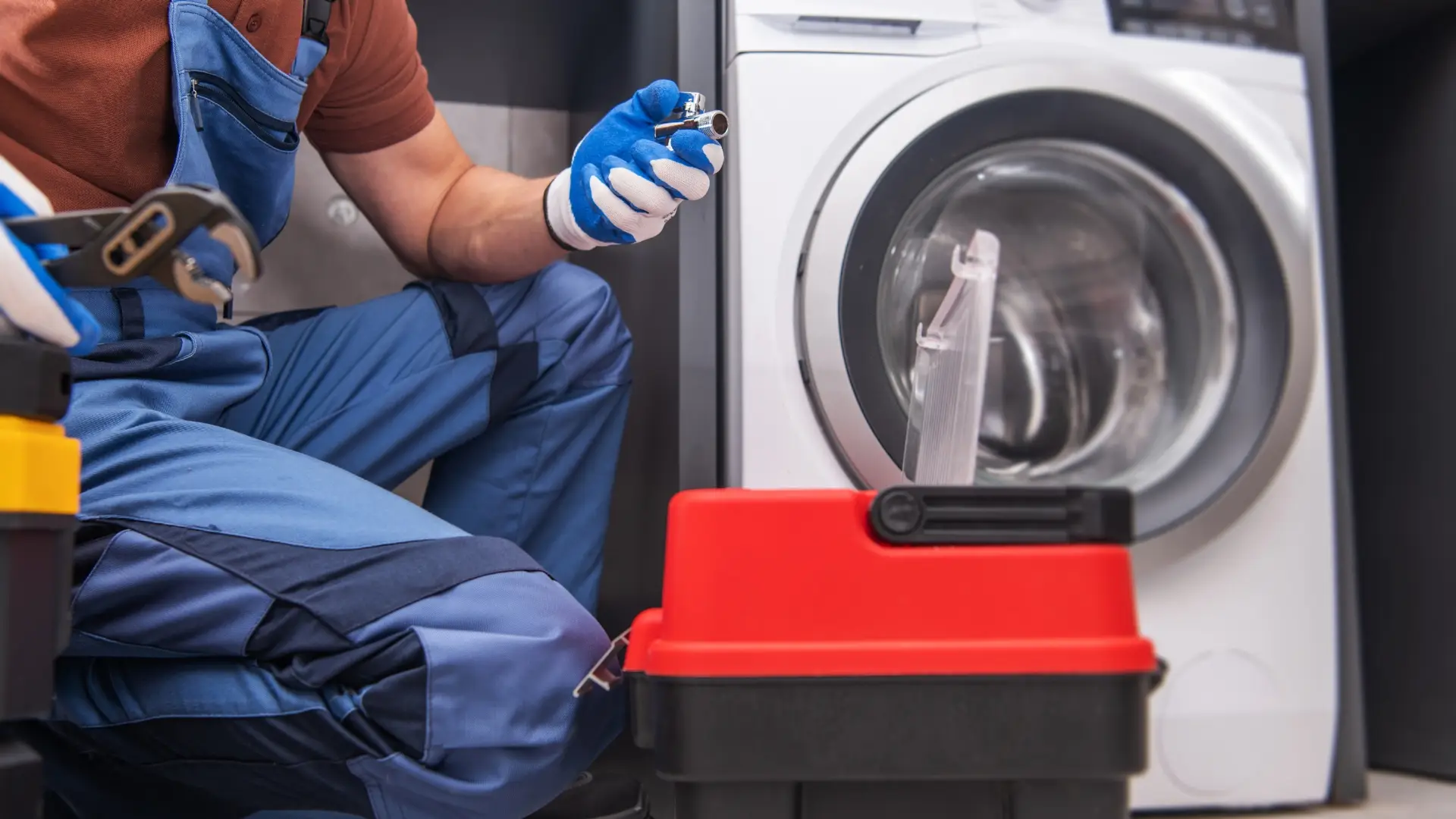Appliance warranties can be confusing and filled with fine print and legal jargon.
This comprehensive guide demystifies appliance warranties, explaining what they cover, what they don’t, and how to navigate the claims process.
Understanding your rights and responsibilities under a warranty can save you money, frustration, and potential legal headaches.
What is an Appliance Warranty?
An appliance warranty is a contract between you and the manufacturer (or sometimes a third-party provider).
It promises to cover certain repairs or replacements if your appliance fails due to manufacturing defects or workmanship issues within a specific timeframe.
Think of it as a safety net for your investment, offering peace of mind and protection against unexpected repair costs.
A longer warranty often signals the manufacturer’s confidence in the appliance’s quality and lifespan.
Different Types of Appliance Warranties
Warranties come in different flavors.
The most common is the manufacturer’s warranty, typically included with your purchase, and lasts for a set period, often one year.
These warranties usually cover parts and labor for repairs due to defects under normal use.
Details vary by appliance and manufacturer, so read the fine print.
As an example, Liberty Home Guard’s Appliance Guard plan covers a wide range of appliances, from refrigerators and dishwashers to garage door openers, with coverage limits of $2,000 per appliance and a 60-day repair guarantee.
Beyond manufacturer warranties, there are extended warranties (also known as service contracts or protection plans).
These offer extended coverage beyond the manufacturer’s warranty, sometimes for up to five years or more.
They can cover additional issues like accidental damage or offer perks like in-home service.
You can buy these from the manufacturer, the retailer, or a separate warranty company.
Old Republic Home Protection, for example, offers coverage limits of up to $7,000 per appliance with their Elite plan.
What is Typically Covered Under an Appliance Warranty?
Understanding what’s typically covered is crucial for maximizing your warranty’s benefits.
Generally, a manufacturer’s warranty will cover defects in materials or workmanship that affect the appliance’s functionality. This means problems arising from manufacturing errors, not from your actions.
Think of the core components: motors, electronics, and major functional parts.
For example, if your refrigerator’s compressor fails due to a manufacturing defect, the warranty should cover the repair or replacement.
Similarly, if your oven’s heating element burns out prematurely due to a faulty component, that’s usually covered too. The key is that the problem must stem from a flaw in the appliance itself, not from external factors like accidental damage or misuse.
The extent of coverage can vary between manufacturers and even between different appliance models from the same manufacturer.
Some warranties offer comprehensive coverage for all parts and labor, while others might have limitations.
For example, some warranties might cover only parts, leaving you responsible for labor costs.
Others might have a tiered system, offering full coverage for a certain period and then reduced coverage for subsequent years.
It’s crucial to carefully review the warranty documentation for your specific appliance to understand the exact terms and conditions.
Look for details on covered components, labor costs, and any exclusions or limitations.
Understanding these details can save you time, money, and frustration if you need to make a warranty claim. If you’re unsure about what’s covered, don’t hesitate to contact the manufacturer or a qualified appliance repair technician for clarification.
Uptown Appliance Repair can help you understand your warranty coverage and provide expert repair services if needed.
What is Not Covered Under an Appliance Warranty?
While appliance warranties offer valuable protection, they don’t cover everything.
Understanding the common exclusions can save you from disappointment and unexpected expenses.
Here’s what’s typically NOT covered:
- Accidental Damage: Damage caused by accidents, misuse, or abuse is generally not covered. This includes things like dropping your appliance, spilling liquids on it, or using it for unintended purposes. Think of it this way: the warranty protects you from the manufacturer’s mistakes, not your own.
- Natural Disasters: Damage caused by natural disasters, such as floods, earthquakes, or fires, is typically excluded from standard warranties. You might need separate insurance coverage for these events.
- Cosmetic Damage: Scratches, dents, and other cosmetic imperfections that don’t affect the appliance’s functionality are usually not covered. These are considered normal wear and tear.
- Normal Wear and Tear: As appliances age, certain components naturally wear out. Warranties typically don’t cover repairs or replacements due to normal wear and tear. This includes things like worn-out belts, hoses, or filters. These are considered maintenance items, and replacing them is your responsibility.
- Improper Installation or Maintenance: If an appliance malfunctions due to improper installation or inadequate maintenance, the warranty might be voided. It’s crucial to follow the manufacturer’s instructions for installation and maintenance to keep your warranty valid.
- Commercial Use: Warranties for residential appliances typically don’t cover commercial use. If you’re using a residential appliance in a commercial setting, you might need a separate commercial warranty.
Understanding these exclusions can help you avoid surprises and make informed decisions about repairs and maintenance.
Remember, reading the fine print of your warranty is crucial for knowing your coverage limitations.
If you’re unsure about whether a specific issue is covered, contact the manufacturer or a qualified appliance repair technician like those at Uptown Appliance Repair.
How to File an Appliance Warranty Claim
Filing a warranty claim can feel daunting, but it doesn’t have to be.
Knowing the process and having the right information at your fingertips can make the experience much smoother.
Let’s break down the steps involved in filing an appliance warranty claim, helping you navigate the process with confidence.
Before you even think about filing, do your homework. Locate your warranty and read it thoroughly.
Understand what’s covered, what’s not, and any specific conditions or limitations.
Make sure you have the essential details: manufacturer’s name, purchase date and location, and payment method. This preparation will save you time and frustration later.
Next, assess the situation. Does your problem fall within the warranty’s scope? If it’s excluded, don’t waste your time filing a claim.
Explore other options, and consider purchasing accidental damage protection for future appliances.
However, if you’re unsure, it’s worth proceeding to get clarification from the provider.
Gather your evidence. Photos and documentation are key to supporting your claim. Clear images of the issue, along with any relevant paperwork, will help expedite the process. This might include photos of the damaged appliance, a copy of the warranty, and your purchase receipt.
Now, it’s time to contact the provider. Many companies offer online claims portals, making the process more convenient. Lowe’s and GE, for example, have online portals for submitting claims. You can also contact customer support directly for assistance.
Clearly articulate the problem when submitting your claim. Explain what’s wrong, how it happened, and the warranty you have. The more specific you are, the better.
Once your claim is submitted, track its progress. Most companies provide online tracking tools or confirmation emails with instructions on how to follow up. Stay organized and keep records of all communication, including dates, names of representatives, and any service reports or invoices. This documentation can be invaluable if disputes or further issues arise.
If your claim is approved, the manufacturer will typically either repair the appliance, replace it, or issue a refund.
The specific resolution will depend on the nature of the problem and the terms of your warranty. If the problem is deemed not covered by the warranty, explore other repair options.
Understanding Your Rights Under an Appliance Warranty
An appliance warranty is a contract, and like any contract, it comes with certain rights and protections for the consumer.
Understanding these rights is crucial for navigating warranty claims and ensuring you receive the service you’re entitled to.
Appliance warranty laws exist to protect consumers, ensuring appliances are fit for their intended purpose, free from hidden defects, and reasonably durable. These laws empower you to seek remedies like repairs, replacements, or refunds if your appliance is faulty.
Warranties, whether expressed or implied, come with certain obligations.
- Implied warranties, unwritten promises created by state law, guarantee basic functionality.
- The implied warranty of merchantability ensures the product is fit for sale and will do what it’s supposed to do.
The implied warranty of fitness for a particular purpose means the product can be used for a specific purpose, as advised by the seller. For example, if a retailer recommends a washer for handling 15-pound loads, and it can’t, that’s a breach of this warranty.
Legal warranties go further, requiring appliances to serve their intended purpose, have a reasonable lifespan, be free of hidden defects, and match their description. If an appliance falls short of these standards, you have the right to request a repair, replacement, or refund.
Start by contacting the seller; if they can’t resolve the issue, reach out to the manufacturer.
Keep records of all communication.
The Magnuson-Moss Warranty Act, a federal law, adds another layer of protection for consumers with written warranties on products costing more than $10.
It mandates clear disclosure of warranty terms, enabling comparison shopping and promoting competition among manufacturers. It also makes it easier to sue for breach of warranty, allowing for recovery of attorney fees and court costs.
The Act doesn’t require businesses to offer written warranties, but if they do, they must comply with these regulations.
It’s important to note that the Act doesn’t cover oral warranties or warranties on services (unless the warranty covers both parts and workmanship for a repair).
A key provision of the Magnuson-Moss Warranty Act is the “full” vs. “limited” warranty distinction.
A full warranty doesn’t limit the duration of implied warranties, provides service to any owner during the warranty period, offers free service, allows for replacement or refund if the product can’t be repaired, and doesn’t impose unreasonable preconditions for service.
If any of these aren’t true, it’s a limited warranty. For example, if a company limits implied warranties to match the duration of its limited warranty, say, two years, that’s permissible under a limited warranty, but not under a full warranty.
The Act also prohibits disclaiming implied warranties if a written warranty or service contract is offered. “Tie-in” sales provisions, requiring the use of specific items or services to maintain warranty coverage, are generally prohibited unless provided free or with an FTC waiver.
Deceptive warranty terms are also unlawful. Time limits for legal action vary by state, generally four years from the purchase date to discover and address problems present at the time of sale. Consult a lawyer for specific guidance.
For used merchandise, implied warranties apply only when the seller is a merchant, guaranteeing usability as expected for the product’s type and price.
If your appliance needs repairs under warranty, review the documentation, contact the manufacturer, arrange for service, keep records, and follow up as needed.
If your claim is denied, remember the Magnuson-Moss Warranty Act allows for recovering attorney fees and other expenses if you prevail in court.


